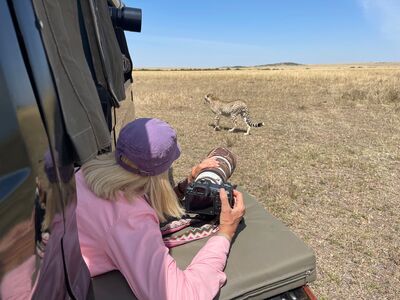Pretty in pink and an elephant!
Oct 31, 2022 17:58:04 #
There are two species of Flamingos in Kenya although there are five worldwide. The two species are the greater and lesser flamingos respectively. There are distinct differences between these two species including their physical appearance. The greater flamingo, true to their name, are bigger and taller in size. The lesser flamingos, however, have a deeper pink colour on their feathers, while their beaks are a deep red with a black tip. The greater flamingo beaks are light pink with a black tip.
Greater flamingos feed on organisms found in the mud including crustaceans while the lesser flamingo thrives on floating algae present in the soda lake waters. Both flamingos are thought to acquire their pigmentation from their prey.Turkana, Lake Elementaita occasionally, and the lesser known Lake Logipi. They occur in their hundreds of thousands if not millions.
The two flamingo species are mysterious and highly intelligent birds. They live in flocks of between ten individuals to over ten thousand. Some flamingos are seen standing on one leg and although there is no definite scientific reason, it has been proposed that he behaviour helps with body warmth retention. Flamingos fly at night to avoid being spotted by predators such as eagles. They also fly in groups forming irregular shapes.
Flamingos like penguins are monogamous birds thus retain a mating partner through life. They also only lay one egg per time. Flamingos breed once in at least three years. Flamingos build their nests primarily out of mud from their surroundings, but occasionally add pebbles and grass straws. The eggs take between 21 and 38 days to hatch with either parent incubating it. Flamingos breed most in seasons of abundant food otherwise they remain abstinent. Non-breeding flamingos may remain behind when the rest of the flock flies to breeding spots. Kenyan flamingos breed in Lake Natron.
Chicks are born spotless white in both species with straight beaks that curve with time. The chicks are fed for the first 3 months by milk both parents produce from their upper digestive tracts. Other members of the colony can also feed them. Flamingos have caretakers for the chicks that when ready, leads them to the water for the first time. This journey occurs on foot. The distance from the nests to the water can be as far as 30 kilometres. Flamingos do not have a natural predator. However, the chicks are often snatched by storks, eagles and frogs that occur in the same habitats. Flamingos in Lake Bogoria occasionally die from getting into the hot springs. Scavengers such as hyenas, crows and vultures then consume their carcasses.
Flamingos have a general life span of between 20 and 40 years in the wild. However, those in captivity have been seen to live up to 60 years. Flamingos are able to start mating from 3y years but most wait until they are five before they start.
If you got clear to the end, sorry if this is more information than you needed....
Greater flamingos feed on organisms found in the mud including crustaceans while the lesser flamingo thrives on floating algae present in the soda lake waters. Both flamingos are thought to acquire their pigmentation from their prey.Turkana, Lake Elementaita occasionally, and the lesser known Lake Logipi. They occur in their hundreds of thousands if not millions.
The two flamingo species are mysterious and highly intelligent birds. They live in flocks of between ten individuals to over ten thousand. Some flamingos are seen standing on one leg and although there is no definite scientific reason, it has been proposed that he behaviour helps with body warmth retention. Flamingos fly at night to avoid being spotted by predators such as eagles. They also fly in groups forming irregular shapes.
Flamingos like penguins are monogamous birds thus retain a mating partner through life. They also only lay one egg per time. Flamingos breed once in at least three years. Flamingos build their nests primarily out of mud from their surroundings, but occasionally add pebbles and grass straws. The eggs take between 21 and 38 days to hatch with either parent incubating it. Flamingos breed most in seasons of abundant food otherwise they remain abstinent. Non-breeding flamingos may remain behind when the rest of the flock flies to breeding spots. Kenyan flamingos breed in Lake Natron.
Chicks are born spotless white in both species with straight beaks that curve with time. The chicks are fed for the first 3 months by milk both parents produce from their upper digestive tracts. Other members of the colony can also feed them. Flamingos have caretakers for the chicks that when ready, leads them to the water for the first time. This journey occurs on foot. The distance from the nests to the water can be as far as 30 kilometres. Flamingos do not have a natural predator. However, the chicks are often snatched by storks, eagles and frogs that occur in the same habitats. Flamingos in Lake Bogoria occasionally die from getting into the hot springs. Scavengers such as hyenas, crows and vultures then consume their carcasses.
Flamingos have a general life span of between 20 and 40 years in the wild. However, those in captivity have been seen to live up to 60 years. Flamingos are able to start mating from 3y years but most wait until they are five before they start.
If you got clear to the end, sorry if this is more information than you needed....
It was always late in the day when we saw these guys
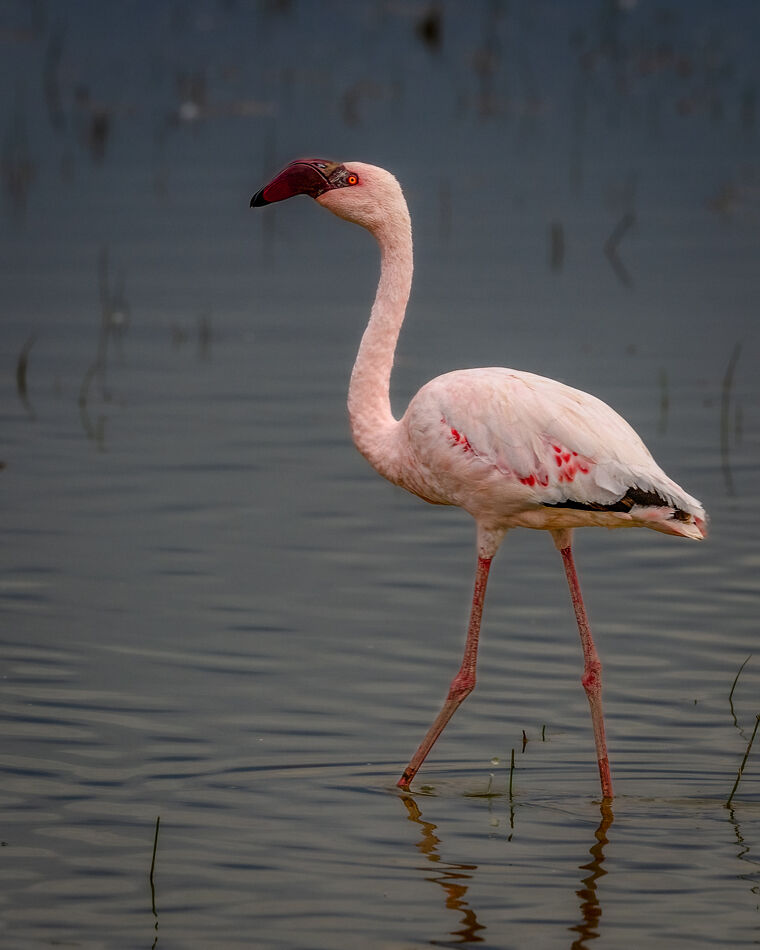
(Download)
The feathers must be just right!
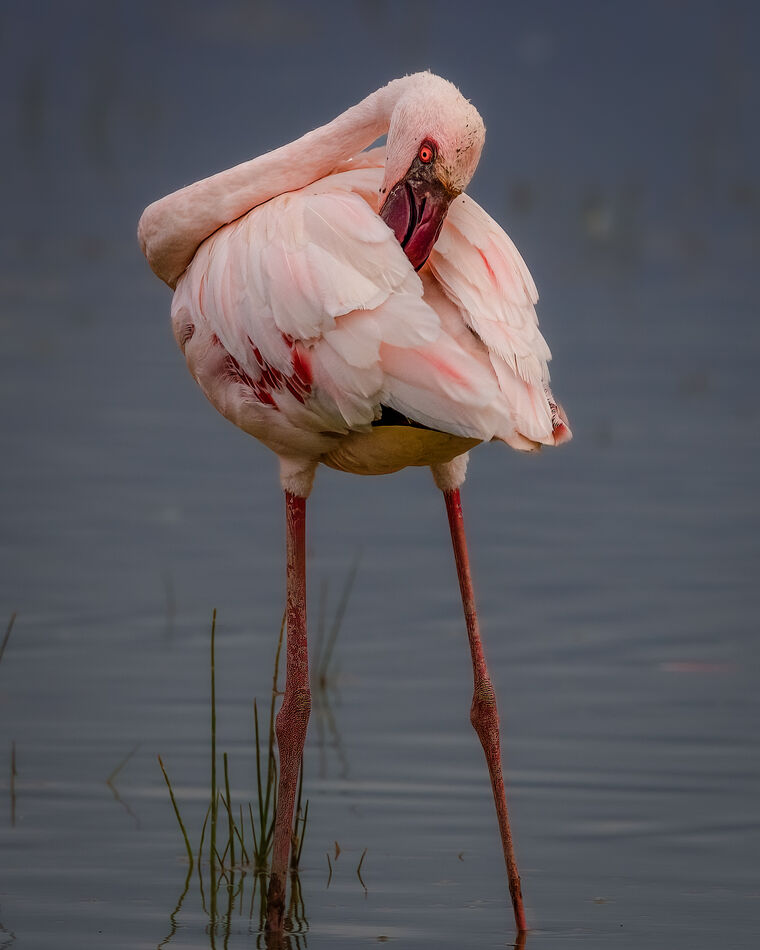
(Download)
Why do they alway look sort of angry?
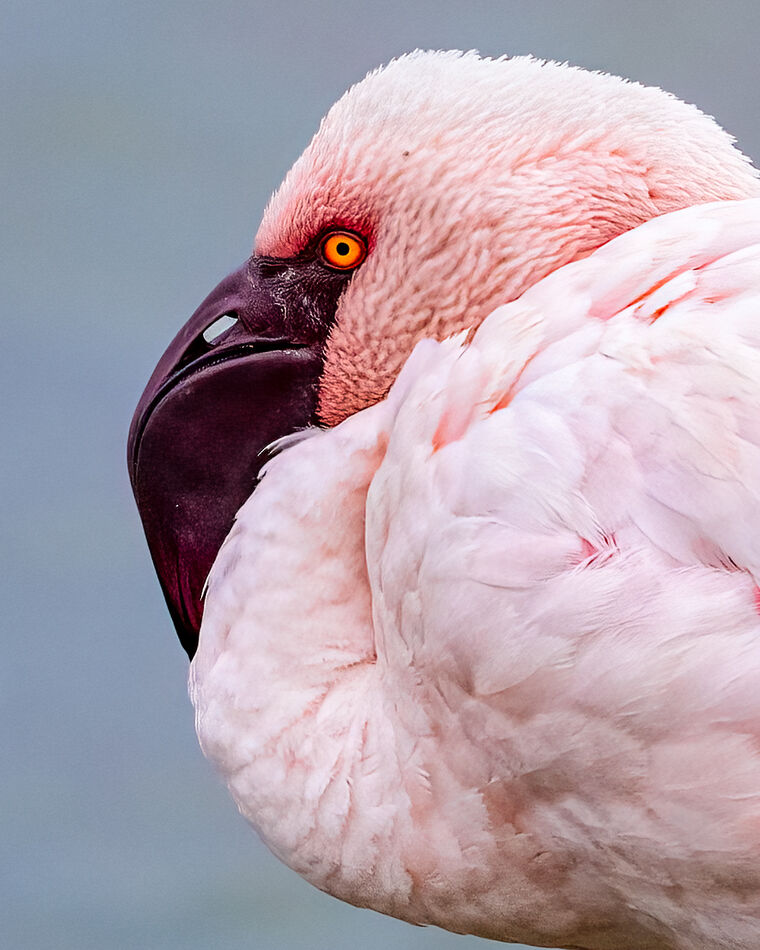
(Download)
I was told this is a young bird, hence the color difference
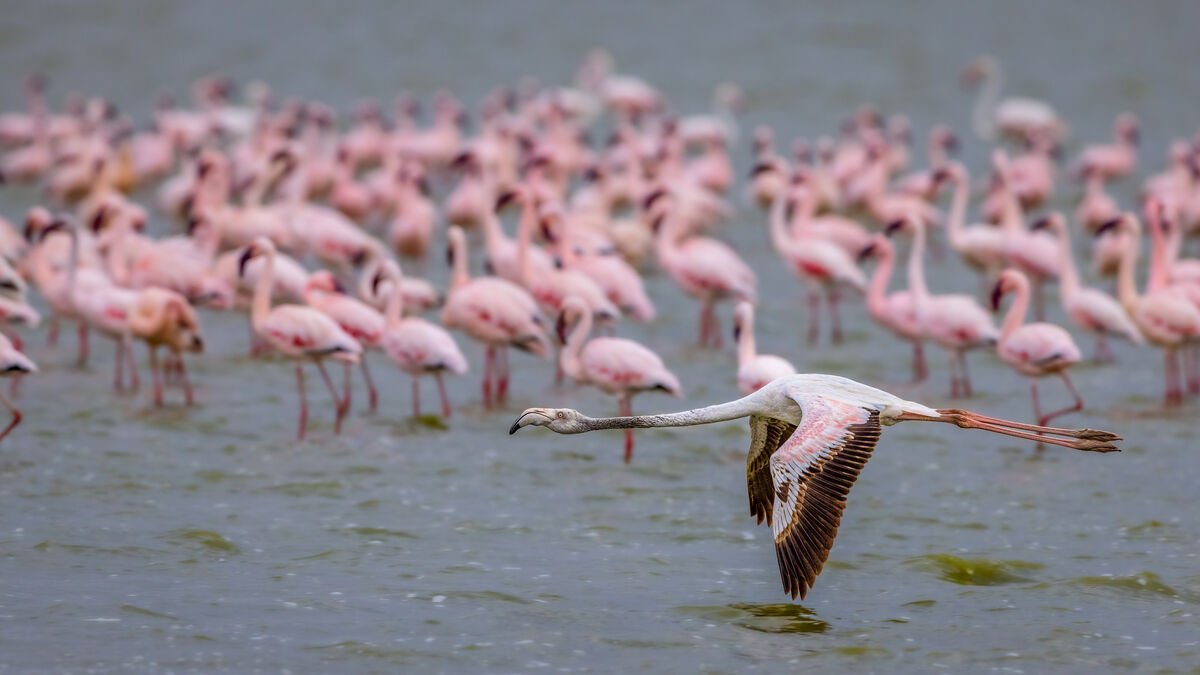
(Download)
The only Greater Flamingo I got a photo of, the others are all the Lesser Flamingo
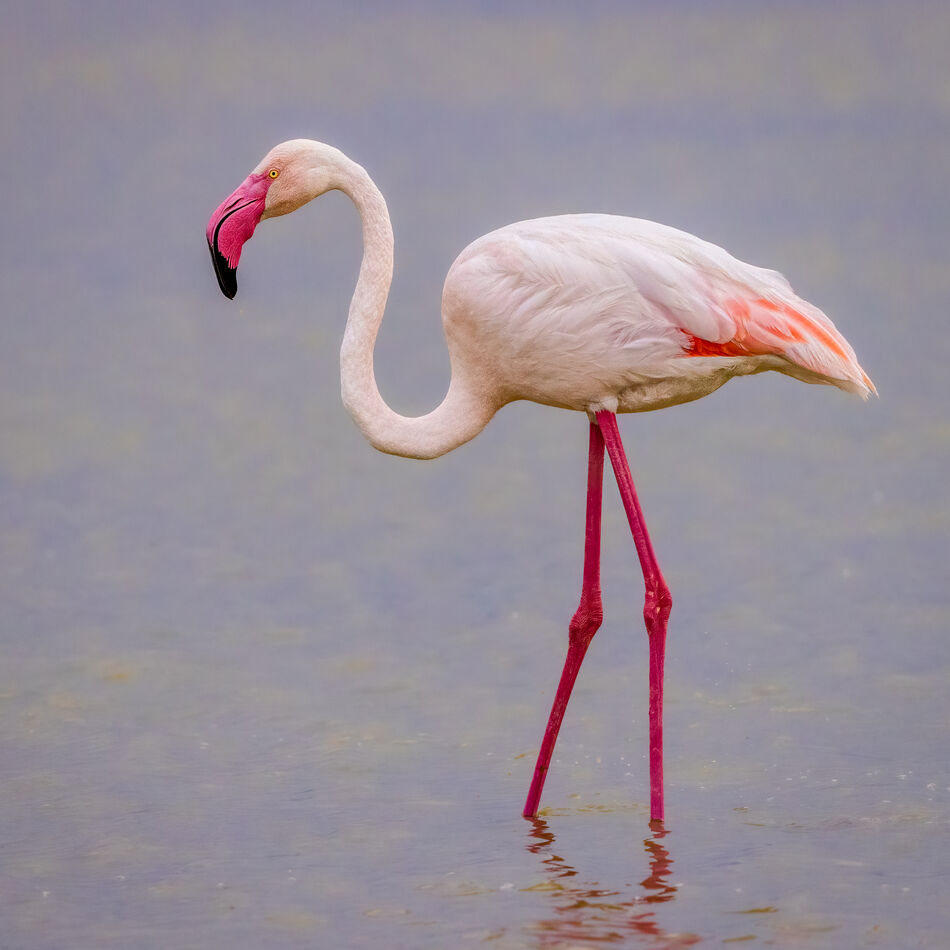
(Download)
Pretty in pink!
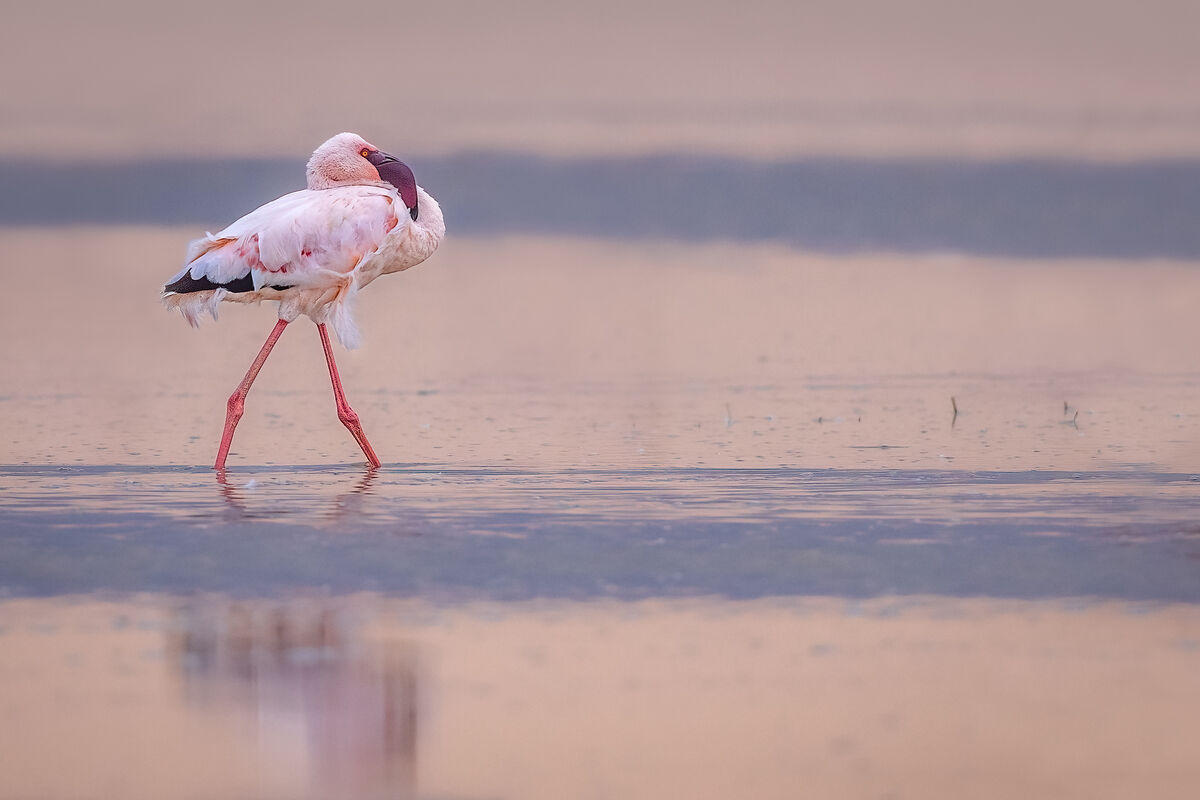
(Download)
Evening light was good here
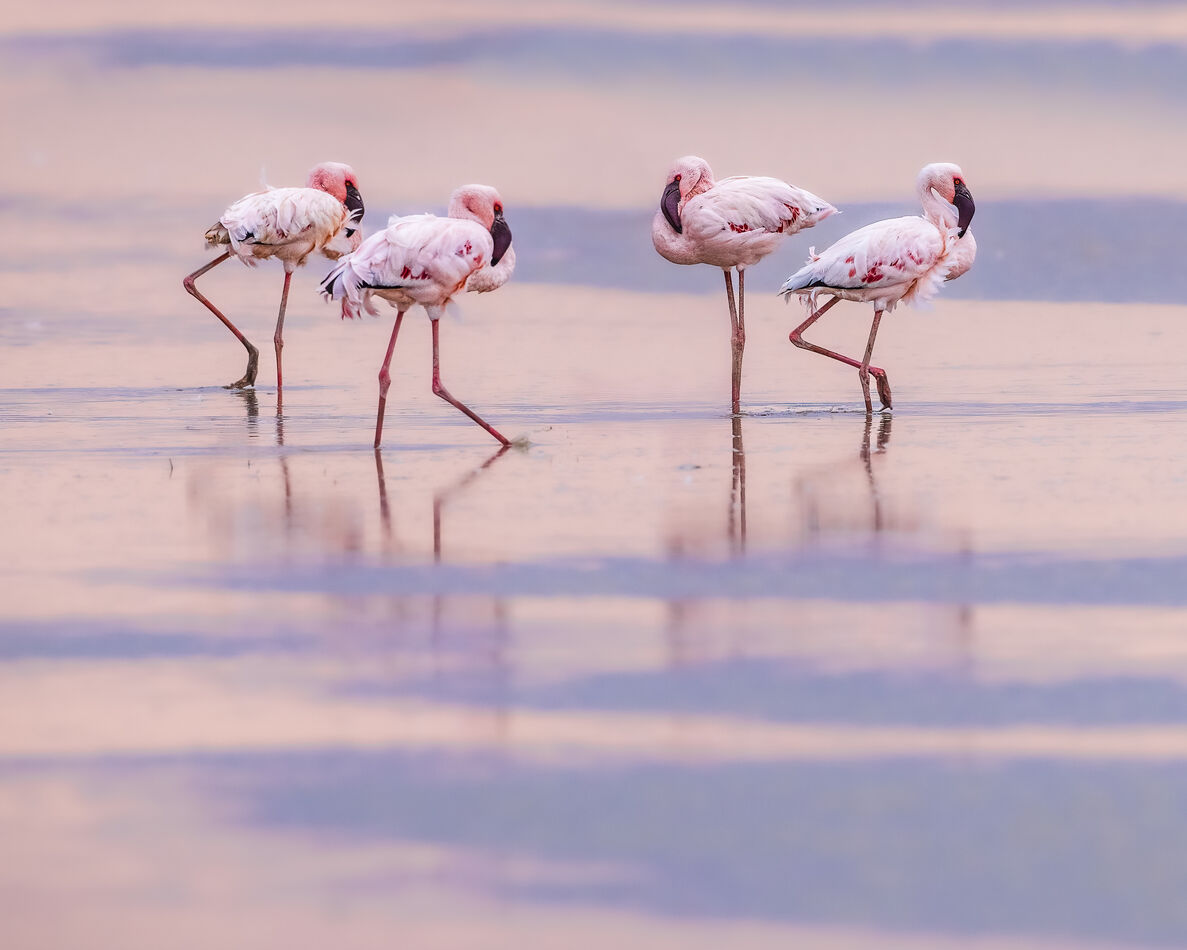
(Download)
All are friends!
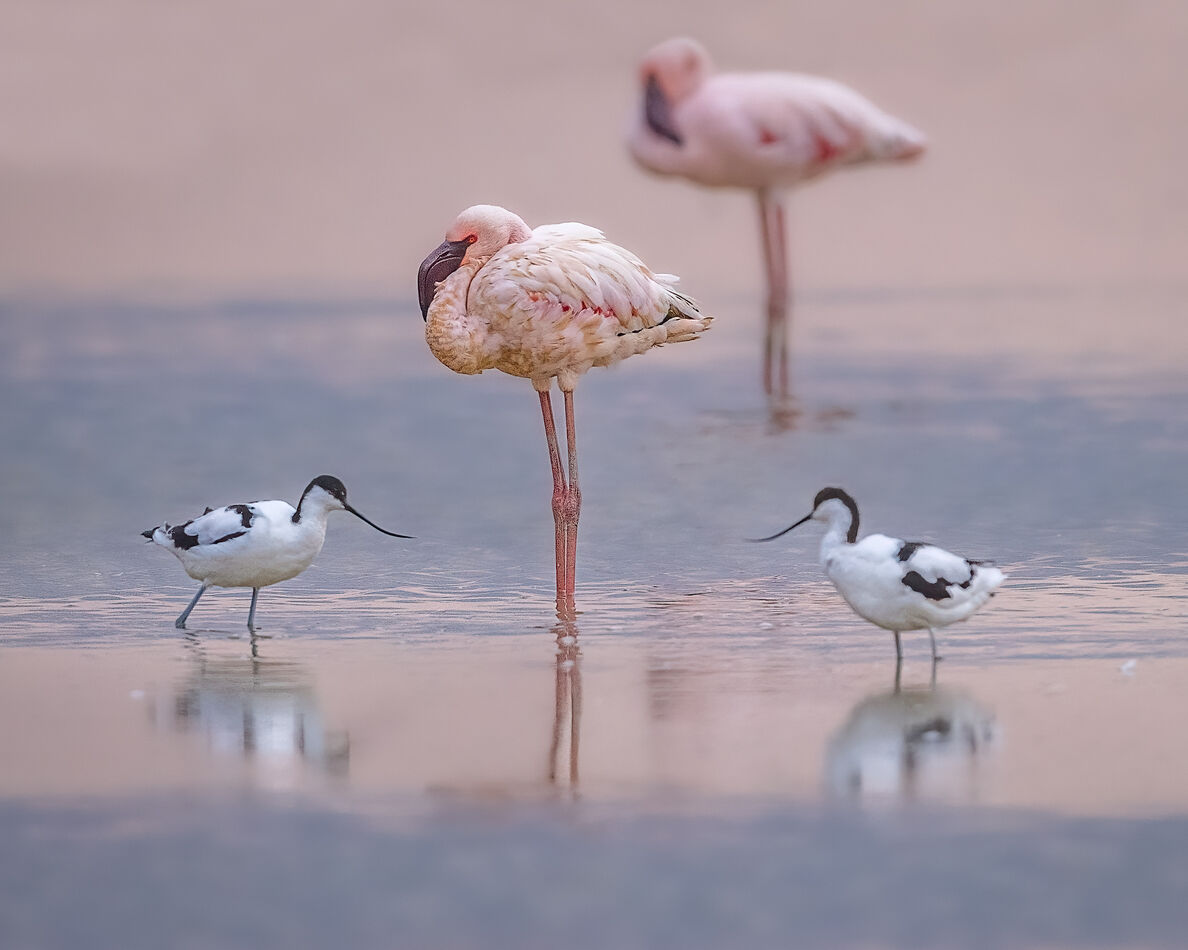
(Download)
My what a big beak you have!
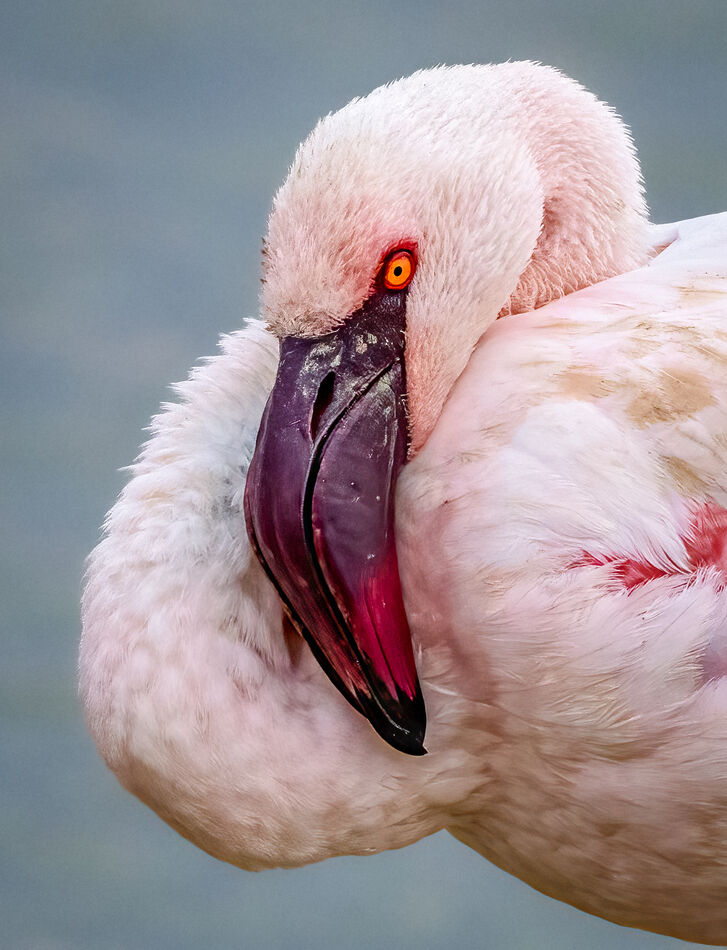
(Download)
This baby would be pretty in a pink scarf! :)
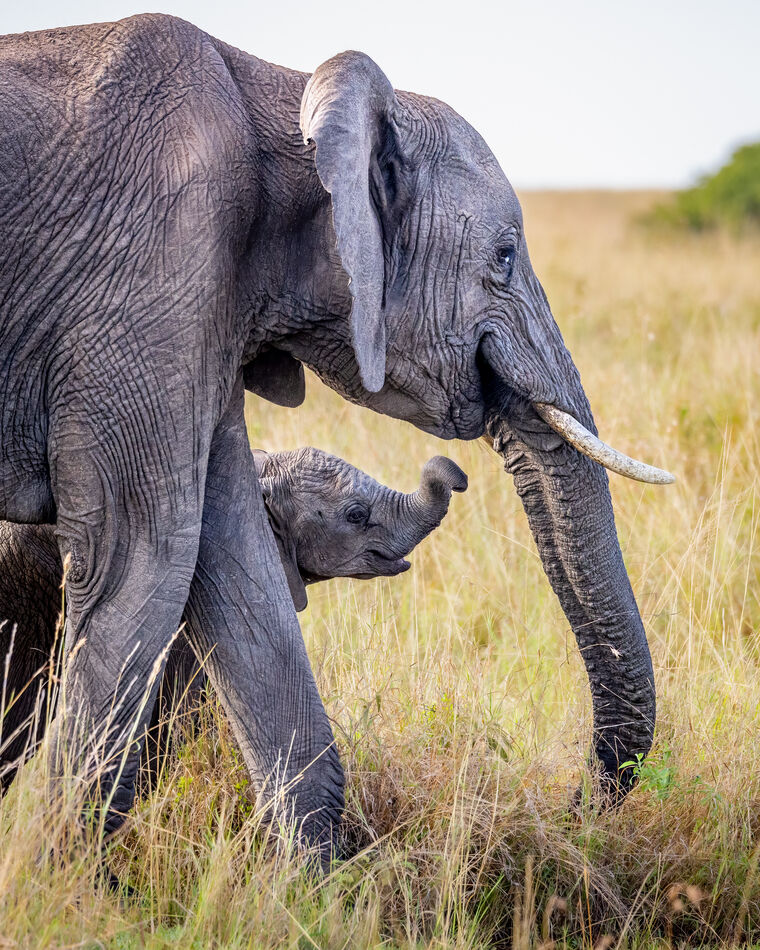
(Download)
Oct 31, 2022 18:15:01 #
Oct 31, 2022 18:43:04 #
Oct 31, 2022 19:00:48 #
Your images are fantastic. How cool to of been there and photograph them and by the way I enjoyed the info on them. Congrats and great shots.
Oct 31, 2022 19:56:59 #
Excellent set! Don't apologize for all the info you gave. I ate it up and anyone not interested can just scroll down to the beautiful pix. 





Oct 31, 2022 21:18:55 #
Photolady2014 wrote:
There are two species of Flamingos in Kenya althou... (show quote)
We went to Lake Elementaita while in Kenya, but very few Flamingos and none close enough for photos. Other than no Leopard, my only real regret from my trip to Africa! Although I would love to dive in the Great Rift Valley lakes, with hundreds of species of Cichlid's. A good reason to go back!!
Nicely done photos

Oct 31, 2022 22:12:57 #
Nov 1, 2022 06:42:14 #
Nov 1, 2022 06:44:13 #
Photolady2014 wrote:
There are two species of Flamingos in Kenya althou... (show quote)
Fantastic set!!! Beth
Nov 1, 2022 07:21:52 #
Nov 1, 2022 09:13:31 #
Photolady2014 wrote:
There are two species of Flamingos in Kenya althou... (show quote)
Nice set Beth.
Nov 1, 2022 09:53:15 #
Photolady2014 wrote:
There are two species of Flamingos in Kenya althou... (show quote)
Wonderful shots, Beth. I really like the image of the Greater Flamingo.
Bubba
Nov 1, 2022 09:53:53 #
Nov 1, 2022 09:59:51 #
Nov 1, 2022 10:06:46 #
If you want to reply, then register here. Registration is free and your account is created instantly, so you can post right away.
